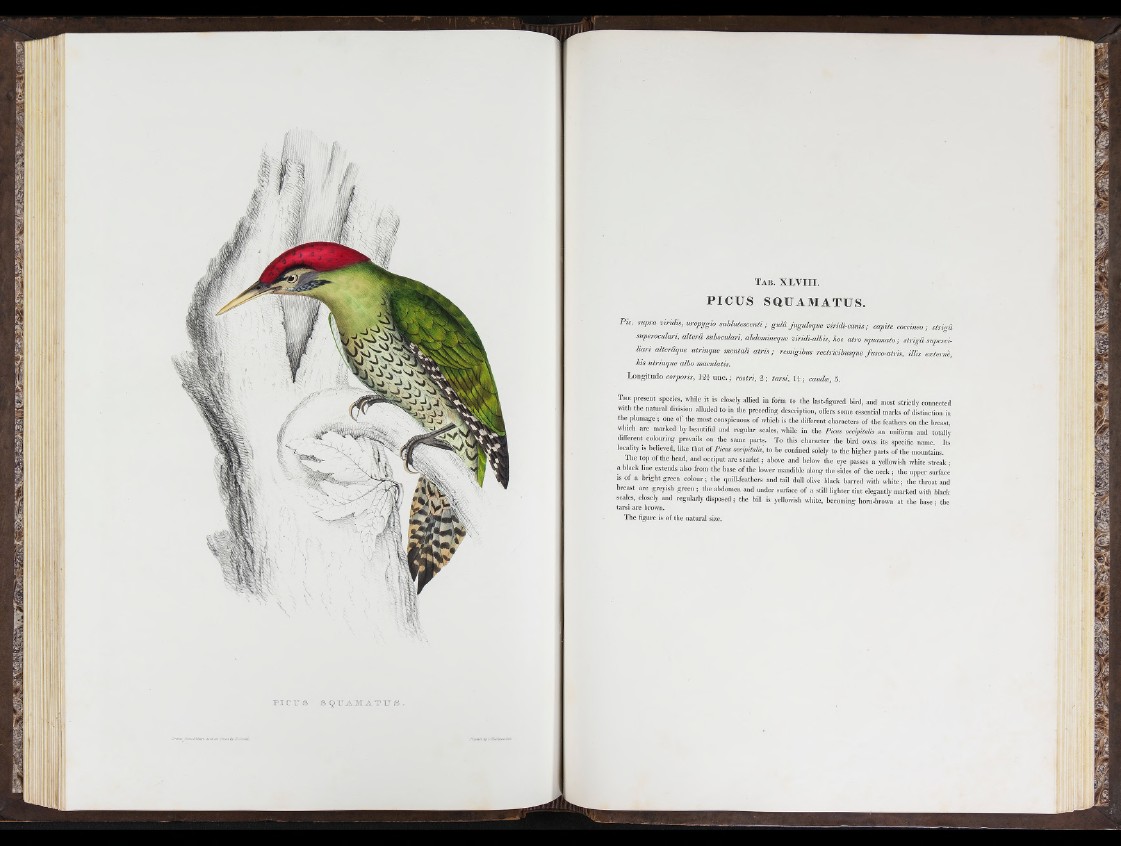
f e - i f ! '
I i i
iil‘!
f t ! . :
1 !i l'Ví;
? ; l : .H
P I f r s s Q r A M A ':i' i : s .
T a b . X L V I I I.
PICUS SQUAMATUS.
P ie . su p ra v in d is , u ro p y g io suU u te s c e n ti ; g u lâ ju g u lo q u e v ir id ú c a n is ; ca p ite coccineo; s tr ig â
su p c ro c id a n , a ite r à suboculari, abdomineque v ir id i-a lb is , hoc a tro sq u am a to ; s tr ig a suqteroi-
h a n a lte râ q u e u tr in q u e m e n ta li a t r i s ; r em ig ib u s re c tric ib u sq u e fu s c o -a tr is , illis e x te rn e ,
h is u tr in q u e albo m a culatis.
L o n g itu d o corporis, IM u n c , ; ro s tr i, 2 ; ta r s i, H ; oaadoe, 6.
T u e present species, while it is closely allieti In form to the last-fignrcd bird, and most strictly connected
with tlie uatnral division alluded to in the preceding description, offers some essential marks o f distinction in
th e ,ilnm a g e ; one o f the most eonspiciions o f which is the different characters of tl.e feathers on the breast,
wlneh arc marked by beautiful and regular scales, while in the P ic a oecipitalis an uniform and totallf
different colonring prevails on the same parts. To this character the bird owes Its specific name. Its
locality IS believed, like that o f Picus occipitalis, to be confined solely to the higher parts of the mountains.
The top of the head, and occiput are scarlet ; above and below the eye passes a yellowish white streak ■
a black line extends also from the base o f the lower mandible along the sides of the neck ; tlie upper snrfacf
IS of a bright green colonr; the qnill-fcathers and tail dull olive black barred with white; the throat and
breast are greyish green ; the abdomen and under surface o f a still lighter tint elegantly marked with black
scales, closely and regularly disposed ; the hill is yellowish white, becoming horn-hrow,, at the base ; the
tarsi are brown.
The figure is of the natural size.